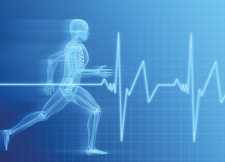Creating training videos with recordMyDesktop
Learning Curve

© sebastian kaulitzki,
A training video of a new application can really reduce the learning curve. The recordMyDesktop program is at an early stage of development but already stable enough for everyday use. We'll show you how to use the program to capture custom procedures in a desktop video.
IT trainers understand that the best way to teach a desktop procedure is to help the user visualize each step. Overhead projectors were long regarded as the best approach; in recent years, computer-based slideshows and video projectors have extended this philosophy. But even these "modern" teaching aids suffer from the fact that they are static: In the best case, all you can show your students is a short text segment and a couple of screenshots.
Educational videos, typically implemented as Flash animations, are a relatively recent innovation. To play the video, all the student needs is a web browser with a suitable Flash plugin. Because a native Linux application for Macromedia's proprietary Flash format did not exist at first, trainers and teachers had no alternative but to create their own tools for building training videos.
A number of Linux developers rose to this challenge and programmed recordMyDesktop [1] and Istanbul [2]. Both programs are currently at an early stage of development, but lab tests reveal that recordMyDesktop is certainly mature and stable enough for everyday use.
[...]
Buy this article as PDF
(incl. VAT)
Buy Linux Magazine
Subscribe to our Linux Newsletters
Find Linux and Open Source Jobs
Subscribe to our ADMIN Newsletters
Support Our Work
Linux Magazine content is made possible with support from readers like you. Please consider contributing when you’ve found an article to be beneficial.

News
-
Zorin OS 18 Hits over a Million Downloads
If you doubt Linux isn't gaining popularity, you only have to look at Zorin OS's download numbers.
-
TUXEDO Computers Scraps Snapdragon X1E-Based Laptop
Due to issues with a Snapdragon CPU, TUXEDO Computers has cancelled its plans to release a laptop based on this elite hardware.
-
Debian Unleashes Debian Libre Live
Debian Libre Live keeps your machine free of proprietary software.
-
Valve Announces Pending Release of Steam Machine
Shout it to the heavens: Steam Machine, powered by Linux, is set to arrive in 2026.
-
Happy Birthday, ADMIN Magazine!
ADMIN is celebrating its 15th anniversary with issue #90.
-
Another Linux Malware Discovered
Russian hackers use Hyper-V to hide malware within Linux virtual machines.
-
TUXEDO Computers Announces a New InfinityBook
TUXEDO Computers is at it again with a new InfinityBook that will meet your professional and gaming needs.
-
SUSE Dives into the Agentic AI Pool
SUSE becomes the first open source company to adopt agentic AI with SUSE Enterprise Linux 16.
-
Linux Now Runs Most Windows Games
The latest data shows that nearly 90 percent of Windows games can be played on Linux.
-
Fedora 43 Has Finally Landed
The Fedora Linux developers have announced their latest release, Fedora 43.

